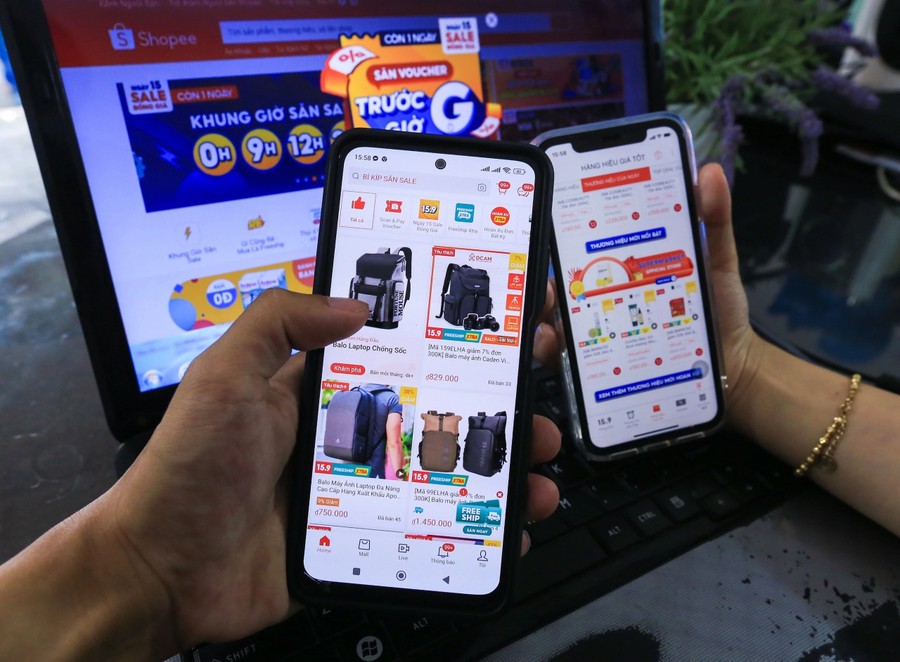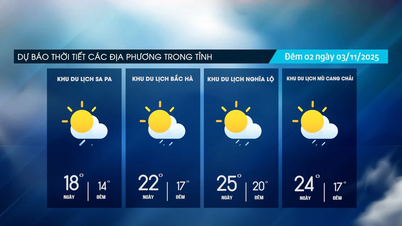
However, besides the convenience, there are also many potential financial risks and waste due to the attraction of the "buy now, pay later" method.
Gen Z - everything has changed
If in the past, the spending of Gen X (those born between 1965 and 1980) was associated with the accumulation mindset of working to save, buy a house, buy a car, buy gold..., then with Gen Z (those born between 1997 and 2009), everything has changed.
Instead of accumulating long-term assets, they tend to think in terms of experiences. Many young people are willing to spend money on travel, cuisine or “healing” experiences. Along with that, online shopping is also faster and more convenient, with just a few touches and a new item is “closed”.
A report from Metric.vn (Metric Data Science Joint Stock Company) shows that in the first 6 months of 2025, Vietnamese consumers spent a total of VND 202,300 billion shopping on 4 e-commerce platforms, including Shopee, Lazada, Tiki and TikTok Shop, an increase of 41.52% over the same period in 2024. In particular, TikTok Shop is the most prominent name with impressive sales growth of up to 69% over the same period.
This boom is largely contributed by young consumers, especially Gen Z - who have the habit of shopping via social networks. Trends on TikTok, review videos from KOL/KOC, or shopping trends that spread quickly make many young people make purchasing decisions based on the influence of the community, from what is "hot trend" on the internet, not from actual needs.
In addition, the “buy to get a discount” mentality also stimulates young people’s spending decisions. The consequences of shopping decisions being made too easily and based more on emotions than reason, causing spending to exceed income and easily leading to waste.
“Since switching to electronic payment, I find that I spend more than when using cash. Before, every time I bought something, I had to take out my wallet and count the money, but now I just need to scan the code and it's done, so sometimes I buy things based on my emotions without paying attention to how much I spent. At the end of the month, when I look back at my transaction history, I'm shocked because the money "evaporated" so quickly," Hanh Mai (19 years old, Hanoi) shared.
According to Pham Hai Nam (22 years old, Hung Yen), due to the fear of missing out on "sale-inducing" livestreams or new shopping trends on TikTok, he has often ordered clothes and shoes because of attractive promotional videos and the stores' commitment to ensure their reputation.
However, when receiving the goods, Mr. Nam felt that the product was not the same as advertised, not suitable or not satisfactory. However, just surfing the internet, Pham Hai Nam was easily attracted and continued to spend on unnecessary things.

Financial technology has brought users countless conveniences: From e-wallets (MoMo, Zalo Pay, VNPay, ShopeePay) to buy now, pay later (Buy Now Pay Later - BNPL). With just a scan or click, users can complete the transaction in less than a minute. Many applications even allow interest-free installment purchases, making the barrier of "not enough money" almost disappear.
From a positive perspective, the “buy now, pay later” method helps young people quickly access products and services that previously required a long time to save up to buy. For example, a student wants to buy a computer for studying but does not have enough money. Thanks to the “buy now, pay later” method, they can own the computer immediately and pay in monthly installments, making this tool good for studying and working.
From another perspective, “buy now, pay later” also has significant risks. It can create a financial illusion, making young people feel financially independent when in fact these are just hidden loans.
Spending easily without planning leads to the risk of debt accumulation and financial pressure when payments are due. If not paid on time, consumers may be listed as bad debt by commercial banks. This directly affects the ability to borrow money in the future for study, business or other financial needs.
According to Statista (Statista GmbH - 2025) forecast, spending through the buy now, pay later form for e-commerce in Vietnam is expected to increase to 1.5 billion USD by 2026. Vietnam is considered one of the countries with the fastest growth rate of "buy now, pay later" in the Southeast Asia region during this period.
The rate of “buy now, pay later” users in Vietnam has also increased significantly, with young people making up the majority; at the same time, figures on bad debt and growth in the number of “buy now, pay later” users from verified sources also show a clear upward trend.
Thus, it can be seen that the boom of “buy now, pay later” clearly reflects both opportunities and challenges in the consumer behavior of Vietnamese youth today. However, more importantly, improving financial literacy, risk management and building healthy spending habits need to be focused on and prioritized by families, schools and individuals to avoid possible negative consequences for consumers, especially young people.
Source: https://baolaocai.vn/mua-sam-online-nguoi-tre-lam-gi-de-quan-ly-tui-tien-post885808.html


![[Photo] President Luong Cuong receives US Secretary of War Pete Hegseth](https://vphoto.vietnam.vn/thumb/1200x675/vietnam/resource/IMAGE/2025/11/02/1762089839868_ndo_br_1-jpg.webp)



![[Photo] Lam Dong: Images of damage after a suspected lake burst in Tuy Phong](https://vphoto.vietnam.vn/thumb/1200x675/vietnam/resource/IMAGE/2025/11/02/1762078736805_8e7f5424f473782d2162-5118-jpg.webp)







































































































Comment (0)